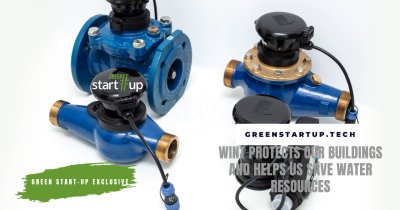What are Euro emissions standards and when were they introduced
The first European-wide "Euro" emissions standard was introduced back in 1992 and it mandated an introduction of catalytic converters on all new cars at the time. One result was that fuel injection became a standard across the industry, as a more emissions-efficient solutions for vehicles. The aim of the Euro emissions standards is mostly to address four major pollutants.
In November last year, the company ran a test in collaboration with logistics company Zhero and the system was able to capture particles that had a size of between 0.3 and 100 microns.

More than half of those were below 10 microns in size and they are considered by scientists to be the most dangerous for human health.
The evolution of the Euro emissions standard
Since the first release of the standard in 1992, there have been a couple of revisions added, each time targeting a lower number when it comes to the respective emissions that internal combustion-powered cars release in the atmosphere.
When it comes to the effectiveness of the Euro emissions standard, SMMT quoted some figures back in 2017 to support their benefit. Thus, carbon monoxide levels in new vehicles have dropped by 63% in gasoline cars, as well as 82% in diesel cars since 1993. Hydrocarbons were cut in half compared to 2001 levels and nitrogen oxides decreased by 84% compared to pipeline levels detected early 2000s.
The biggest difference is noticeable on diesel's particulate matter releases, which went down a staggering 96% in new vehicles powered by this fuel compared to models from 1993.
EU officials said that "the air pollutant emissions from transport are a significant contribution to the overall state of air quality in Europe", which was why they took these tough measures to lower their contribution.
Despite the Euro emissions standards bringing great improvements to the overall quality of the air in the European regions, authorities suggest that the nitrous oxide emissions haven't been lowered as much as they hoped, mostly because daily-driving conditions are not as close to those presented by the initial tests.
Euro emissions standards were revised in 1997, when the Euro 2 standard was introduced and it cut back on carbon monoxide levels, while combining the limit for unburned hydrocarbons and nitrogen oxide, as well as separating the allowed levels for gasoline cars and diesel models.
In 2001, Euro 3 also split two pollutants between gasoline and diesel, those being the hydrocarbons, while also adding a separate nitrogen oxide limit for diesel-powered cars. It's worth mentioning that the warm-up of the cars was also removed from testing.
Forced on cars registered in 2006, Euro 4 didn't bring too many changes, other than a further reduction in the allowed carbon monoxide, hydrocarbons and nitrogen oxides emissions.
In 2011, Euro 5 was quite a big change, especially for diesel-powered cars, as the Diesel Particulate Filter (DPF) was introduced to cut back on the PM2.5 emissions. At the same time, the standard, you guessed it, lowered the overall allowed emissions.
But the DPF system was extremely important, as it allowed for the capture and filtering of 99% of the particulate matter released by diesel engines.
Introduced in 2015, Euro 6 is the latest Euro emissions standard and it suffered a few revisions over time. It mostly focused on cutting back on the nitrous oxide emissions coming from diesel engines, which were reduced from 0.18g/km to 0.08g/km. This was due to the fact that these emissions were connected by experts to respiratory problems in people.

This meant a new type of system was introduced, namely the Exhaust Gas Recirculation (EGR), which allowed for more efficient burning of the emissions.
Clean emission zones and cleaner transport alternatives
Since the Euro standards can't fix all of the emissions coming from the pipelines of vehicles, some cities took action to move fossil-powered cars outside the downtown areas in order to reduce emissions.
Oliver Lord, the UK head of the Clean Cities Campaign, said that "clean air zones are one of the most effective ways to tackle toxic air in our cities. We should applaud city leaders who are taking tough decisions to deliver clean air zones so that we can transform the air we breathe and phase out polluting cars."
Clean air zones prove to be an efficient way to fight air pollution, as in Madrid, these zones helped with an overall reduction of NO2 levels by 32% after a LEZ was introduced back in 2018 in the city.
Italy is the country with the most clean air zones on the continent, 172 to be exact, while Germany has 78 and the UK, 17.
Central and Eastern Europe have the fewest LEZs in all of Europe, but Bulgaria and Poland are expected to introduce new clean air zones in the near future.
 Mihai - Cristian Ioniță
Mihai - Cristian Ioniță












Any thoughts?